#mr blandings builds his dream house
Explore tagged Tumblr posts
Photo

Cary Grant and Myrna Loy in a publicity portrait for the great comedy film Mr. Blandings Builds His Dreamhouse.
33 notes
·
View notes
Text

#movies#polls#mr blandings builds his dream house#cary grant#myrna loy#h.c. potter#ended#result: unheard of
3 notes
·
View notes
Note
The Bachelor and The Bobbysoxer or The Happiest Millionaire
Hi!
So, I'm going to go with The Bachelor and the BobbySoxer, cause A- I'm more familiar with it, and B- it's my absolute favourite movie, so anyone who loves that movie, loves me ; )
Anyway, going into the movie, I loved that the premise is incredibly absurd but incredibly satirical at the same time, because of how relevant relationships with age gaps are today and in that era, and I think that's what the recent American Fiction tried to do, but with race. I also liked that one of the film's core message is the power of charisma- so, in two instances of the film, both sisters envision Cary Grant's character Richard Nugent as a knight in shining armour, but with two different goals- the younger sister Susan, played by Shirley Temple, is taken in by Nugent's voice and his charisma as a renowned "artist", while Margaret, Myrna Loy's character, is taken in, but only after she has experienced Richard as a person (after a conversation on her porch with him detailing that he was earnest and not flirting with her and his attempts to win the overall race for her sister's sake) and not as a troublemaker/criminal. I may be wrong about that last part, but again, it's a moral that charisma is a very powerful tool and you must read it the right way.
I think the jokes have aged well, I love Cary Grant being paired with women his age, and I may come across as offensive for saying this, but when I watch him acting across women who were younger than him (like Audrey Hepburn, Eve Marie-Saint, Deborah Kerr to name a few), I personally cringe. But I also like when the story's self-aware of this age difference and that Cary Grant was aware of this too (?). I really wished that Cary and Myrna had more romantic scenes besides their dance, and those scenes were in their last collaboration Mr. Blandings Builds his Dream House, released the following year.
Personal afterthoughts- I loved the sibling relationship between Myrna and Shirley, it was a little of the opposite of Gilmore Girls, if I'm being honest; the "you remind me of a man" audience-participation game; Rudy Vallhee as Tommy, a man who rather aggressively courts Myrna's Margaret, a big change from the man he portrays in The Palm Beach Story (1942); and the fact that it's very much a screwball comedy, that you can watch it over and over again, like What's Up Doc? (1971), Bringing Up Baby (1938), and The Philadelphia Story (1940/41).
Well, those are my thoughts. thank you so much for the ask. : )
#ask requests#classic hollywood movies#the bachelor and the bobby soxer#mr blandings builds his dream house#the palm beach story 1942#what's up doc#bringing up baby#the philadelphia story
5 notes
·
View notes
Text

1/11/24
MR. BLANDINGS BUILDS HIS DREAM HOUSE, directed by H.C. Potter, 1948.
2 notes
·
View notes
Photo

12 notes
·
View notes
Text
Three Cary Grant movies in a row!
Script below the break
Hello and welcome back to The Rewatch Rewind! My name is Jane, and this is the podcast where I count down my top 40 most rewatched movies. Today I will be discussing number 28 on my list: RKO’s 1948 comedy Mr. Blandings Builds His Dream House, directed by H.C. Potter, written by Norman Panama and Melvin Frank, based on the novel by Eric Hodgins, and starring Cary Grant, Myrna Loy, and Melvyn Douglas.
Yes, I’m talking about yet another Cary Grant movie – I warned you there would be a lot of them. In this one, he plays Jim Blandings, an advertising executive who lives in a Manhattan apartment with his wife Muriel (Myrna Loy) and their two children. Tired of feeling crowded, and taken in by an advertisement, they decide to purchase an old house on a large property in Connecticut. They initially resist the idea that the house must be torn down, but ultimately get excited about being able to build one to their own specifications. However, this is not nearly as simple, or as affordable, as they anticipate.
The first time I watched this movie, it was late at night and I was very tired, so I remember almost falling asleep without really getting into it. But I enjoyed it a lot more the second time, and it’s grown on me over the years. I watched it for the first time in 2003, then twice in 2004, and then once each in 2006, 2008 through 2013, 2015, 2016, 2018 through 2021, and then twice in 2022. And while I could barely keep my eyes open the first time I watched it, now I find it difficult to tear them from the screen when the movie is on.
As I’ve said several times in previous episodes, Cary Grant was a brilliant comedic actor, and once again, he is very funny in this movie. Just watching his morning routine in the apartment at the beginning is hilarious. Jim Blandings is very sure of himself, even and especially when he shouldn’t be, and Cary plays that very convincingly and humorously. Myrna Loy is probably best known for playing Nora Charles in the comedy-mystery Thin Man movies, so it should come as no surprise that she is also very funny here. Muriel occasionally tries to rein in some of Jim’s recklessness, but also gets caught up in the dream of the house, and Loy portrays that flawlessly. Apparently critics thought these stars were too old for these roles (they were both in their mid-40s at the time), and that it would have made more sense to show a naïve young couple not knowing how to build a house, but personally I think it works better to show a middle aged couple who have every reason to believe they know what they’re doing find out that they have no clue. The movie also makes it clear that it’s only because Jim is older and more established in his career that he’s able to do this. At one point when he’s venting about how everything’s costing way more than they were anticipating, Jim points out that if he can barely afford it, there’s no way a young couple ever could. And looking at this movie from a modern lens is kind of surreal because like, imagine a single-income family of four being able to afford a house! To put things in perspective, Jim Blandings was making $15,000 a year in 1948, which is the equivalent of approximately $190,000 in 2023, and the final cost of his dream house was $38,000, or approximately $480,000 now. It certainly costs a lot more than he initially thinks it will, but it’s still doable for him – although he does nearly lose his job at one point – whereas it would not have been for a young couple just starting out. And again, Cary Grant and Myrna Loy are so delightful to watch that I cannot comprehend wanting to replace them.
The acting and the writing encourage the audience to laugh at both Jim and Muriel while still finding them sympathetic. There’s a rather beautiful poetic justice in the story of an advertising executive, who spends all day figuring out how to convince people to buy things they don’t need and can’t afford, getting convinced by an ad to build a house he doesn’t need and can’t afford. And yet, we still want him to succeed, and share his frustration when things go wrong. Muriel’s extremely specific demands for the house can be ridiculous, but we still want her to get the dream house she desires. Perhaps her greatest moment in the film is when she spends several minutes describing in detail the exact shade she wants each room painted: one should exactly match the color of fresh butter, one needs to be white – not a cold, antiseptic hospital white, but not to suggest any other color but white; another should be practically an apple red, somewhere between a healthy Winesap and an unripened Jonathan, etc. When she finally gets distracted and walks away, one of the painters says to the other, “You got all that?” and the other replies, “Red, green, blue, yellow, white.” It’s very funny, but also maybe a little bit sexist, in a “These silly women and their ridiculous obsession with detail” way, but at least the movie makes fun of Jim too. He’s constantly taking charge of things he doesn’t understand and making them worse – from illegally authorizing the old house to be torn down to inadvertently instructing builders to rip out their work. So rather than making fun of Jim and Muriel specifically, the movie is really making fun of the gender roles they feel obligated to fulfill, and the way society has made basic needs like shelter immensely complicated to obtain. And while some of that is rather painful to face, this movie manages to make the overall experience mostly enjoyable. It’s thought-provoking without becoming too upsetting.
While a lot of what I love about this movie comes from Grant and Loy, I also love Melvyn Douglas’s performance, and his character, Bill Cole, is probably my favorite. Bill narrates portions of the movie, and introduces himself to the audience as “Jim’s lawyer and quote best friend unquote.” He’s kind of the voice of doom regarding the dream house project, pointing out all the ways Jim gets taken advantage of along the way and repeatedly advising him to give up, but far from being a stick in the mud, he has an excellent sense of humor, and goes along for the ride only slightly reluctantly. There’s a trope that’s especially common in movies from this era of a married couple having a male “friend of the family” who is interested in the wife and kind of waiting for her to either leave her husband for him, or at least have an affair with him. The character of Hank Entwistle in Monkey Business is like this, and there’s a character in the movie I’m going to talk about next week like this. Bill Cole is almost like this, and Jim certainly sees him like this for a good chunk of the movie, but the way I see him, he’s not actually interested in Muriel that way, and is, in fact, if not canonically queer, certainly queer-coded. We do know that he dated Muriel in college. At one point when Jim asks Muriel why Bill’s always hanging around them instead of getting married, Muriel says it’s because he could never find another girl like her, but this doesn’t seem like it’s meant to be particularly serious. When Jim objects to the fact that Bill always takes his leave by shaking Jim’s hand and kissing Muriel on the cheek, Muriel dryly inquires if Jim would prefer it the other way around. There is also a running joke about Jim and Bill getting stuck in a closet, so modern audiences might interpret that to mean that they’re secretly gay, although I’m pretty sure the closet metaphor wasn’t commonly used in 1948. Bill doesn’t seem to really show any attraction toward either Jim or Muriel, so of course I’m inclined to headcanon him as aroace. We do find out that Muriel somehow ended up with both Bill’s and Jim’s fraternity pins – which the Blandings daughters find along with her old diary in the process of moving into the new house. When Jim then confronts Muriel about her having been in love with Bill, she laughs and responds with, “Of course I was in love with Bill! In those days I was in love with a new man every week!” She considers her time dating Bill to be relatively meaningless, and currently sees him as a good friend. Most of Jim’s bouts of jealousy in the movie seem to be misplaced frustration with the way things are going with the house and/or his job, rather than in response to any of Muriel or Bill’s behavior, which is part of the film’s effective commentary on how gender roles leave men feeling like they can’t express their emotions honestly.
Anyway, one evening, when Jim is working late because a slogan he’s been struggling to come up with for months is due the following morning, Bill stops by the new house to visit Muriel, and there’s a major rainstorm. A neighbor informs Muriel that her phone isn’t working and a nearby bridge is out, so her children can’t get home from school, but they’re staying with a different neighbor on the other side of the bridge. This also means that Bill can’t get home, so he’ll have to spend the night in the house alone with Muriel. When he half-jokingly gasps, “Think of my reputation!” Muriel responds with, “Don’t worry, Snow White, you’ll be just as pure and unsullied in the morning as you were the night before,” and he says, “That’s the story of my life.” Now, I feel like there are a couple different ways to interpret this. One way – the allo-heteronormative way – is that they would like to sleep together, but she’s happily married, and he respects that, so they resist. I’m not saying that’s an invalid interpretation, but something about the way they deliver those lines, and the way they interact in the rest of the movie, doesn’t quite feel like that to me. Another interpretation is that they don’t want to sleep together, and they just want to make sure they’re on the same page about that. Think about how much better it makes the scene if Bill is asexual, and his “Think of my reputation!” is his way of making a joke out of not feeling comfortable with the situation, and her response is reassuring him that she understands and doesn’t see him that way either, and his “That’s the story of my life” is him trying to pretend to be disappointed because an allonormative world tells him he should be, but he’s actually relieved. This could also be because Bill is gay, or straight or bi and just not attracted to Muriel, but even then, the point about defying social expectations still stands. Since long before I knew the terms “aromantic” or “asexual,” I have been drawn to stories about people who are expected to fall in love and/or sleep together and then don’t. It has always felt so encouraging to see adults maintaining close platonic relationships, even when society tells them they shouldn’t be platonic. So I love that Bill and Muriel are friends who can spend the night in the same house without becoming overwhelmed by passion or whatever seems to usually happen in situations like that.
Of course, in this particular case, due to production codes there was basically no chance that they would commit adultery anyway, and all of this is probably definitely me reading way too much into something that’s barely there. The following morning, when Jim makes it back home – after giving up on the slogan even though he knows he’ll be fired – and finds out that Bill spent the night, there’s a bunch of other stuff going on with the contractor telling them about more expenses they’ve incurred, but Jim is particularly upset about Bill being there. Then one of the workers shows up at the house and declares, “There’s a matter of twelve dollars and 36 cents” and Jim loses it, going off on a whole rant saying things like, “Why stop there? Just take everything I have!” until the worker clarifies, “No, I owe you $12.36.” Suddenly Jim’s anger melts away, and he also loses every trace of jealousy and suspicion. This certainly supports what I said earlier about Jim’s jealousy really being misplaced frustration, which I also think supports the idea that Bill is asexual, and that even if people didn’t use that term at that time, at least on some level both Jim and Muriel understand that Bill is not a threat to their marriage. Jim is only jealous because he feels like he should be, and it’s a convenient and socially acceptable outlet for his real feelings. The last shot of the movie is of the Blandings family enjoying their front yard, with Jim reading the book the movie is based on. He looks up and says to the audience, “Drop in and see us sometime” and then Bill moves into frame and adds, “Yeah, do that, won’t you?” implying that he has been accepted as practically part of the family, and that if he is aroace, he’s certainly not alone, and I absolutely love that.
I’ve mentioned before that part of why there are so many Cary Grant movies in my top 40 is because I have a multi-day marathon around his birthday every year, and Mr. Blandings Builds His Dream House is almost always part of that. I tend to watch this one on his actual birthday because the only specifically Cary Grant-related item of clothing I own is a long-sleeved t-shirt I got for Christmas in 2007 with a quote from this movie on it, which I will probably wear every January 18 for the rest of my life, even though I kind of have mixed feelings about the context of the quote in the movie. The slogan that Jim gives up on during that fateful stormy night is for a product called Wham, which is a brand of ham. He spends all night trying to come up with an acceptable slogan, but they’re all terrible. I would like to point out that he’s working on this with his female secretary, which means he has even less reason to be jealous of Muriel spending all night with Bill, but that’s not really important. I also feel the need to tell you about my favorite bad slogan he comes up with: “This little piggy went to market, as meek and as mild as a lamb. He smiled in his tracks when they slipped him the axe; he KNEW he’d turn out to be Wham!” The extremely concerned look on his secretary (played by Lurene Tuttle)’s face when she hears that is so perfect. But anyway, he finally gives up and goes home, and after all the drama of finding Bill there and owing more money but also getting a refund, the maid Gussie (played by Louise Beavers) is serving breakfast, and when the girls ask if there’s ham, she replies with, “Not just ham; Wham! If you ain’t eatin’ Wham, then you ain’t eatin’ ham!” And Jim does a double take and then exclaims, “Give Gussie a $10 raise!” and then we see a magazine ad featuring Gussie’s face and this slogan, and I have some questions. What exactly did he mean by a $10 raise? Ten dollars per hour? Per week? Per year? Also did he actually give her credit for coming up with the slogan, or did they just use her words and likeness without her really getting anything out of it, apart from this ambiguous raise? Part of me likes to think that she got hired by Jim’s advertising agency after this, but I feel like the more likely explanation is that a white man took credit for a black woman’s work. So again, I have some mixed feelings about my shirt that has a picture of a ham on it with the words “If you ain’t eatin’ Wham, then you ain’t eatin’ ham!” But despite its weirdness and its flaws, I mostly have positive feelings toward this movie. And I will never forget the joy I felt the one and only time someone who hadn’t watched this movie with me recognized the quote from that shirt, so shout out to my 12th grade history teacher.
Thank you for listening to me discuss yet another Cary Grant movie. I do apologize if you’re getting tired of hearing about him, but at least each of the four Cary Grant movies I’ve talked about so far has been from a different decade, so hopefully that has added enough variety to keep things interesting. Next up is another 1940s movie, although Cary Grant was not in it, so you’ll get a break from hearing about him, for now. In previous episodes I’ve ended with a single line from the next movie, but for this one I have to quote a three-line exchange between two people, because it’s my favorite part of the movie and I can’t help myself. “And then I heard a noise, and then I saw-” “What kind of a noise?” “…Like a sound.”
#mr blandings#mr blandings builds his dream house#cary grant#myrna loy#melvyn douglas#aroace headcanons#rewatch rewind
7 notes
·
View notes
Text
Not A Book Friday

Oh, two building things in one week. We’ll pretend like I totally did that on purpose…
This movie is both hilarious, and sort of makes one want to hide under a duvet if you’ve ever been around when a house is being built. Yikes….
Mr. Blandings and his family are quite all over each other in their small apartment in New York. His wife wants to knock out a wall and remodel their apartment, but, instead, Jim stumbles into the idea of building in Connecticut, and decides to do that. He goes from thinking that it’ll be a piece of cake, to… well… it goes very very off the rails. From where they find water (or don’t find water) to the paint choices (that one had me cracking up). It’s a movie that moves fast and does not pull any punches.
And as I said above, it’s mostly a hilarious movie (with a side of ‘oh no, oh no’). Ironically, it was said to have lost money at the box office. (Oops, guess Cary Grant couldn’t do it all). And, I used an Inflation Calculator on one of the amounts that gets thrown around for how much this could cost (before it all goes to hell in a handbasket) is $18,000. And, it only comes to $233,763.80. I’m sure that there are some places in Connecticut where houses can be built for $230,000 still? Maybe…. Or maybe not… Still. A fun film.
Mr. Blandings Builds His Dream House
#nmlRA#nevins memorial library#notabookfriday#cary grant#myrna loy#melvyn douglas#mr blandings builds his dream house
1 note
·
View note
Text
i was tagged by @localsealboy (and ages ago, i believe, by @eg515 (? if i'm remembering wrong, then uh. consider yourself tagged now friend)) (edit: and @smileylover99, just now, very fiendishly. i see youuu) to post 10 gifs of 10 favorite movies without naming them - a fun task! thank you!! <3
so, in order of year of release:










i will tag 10 people: @redgoldblue @actingcamplibrarian @theartichokesarepurple @randomkiwibirds @glassmirrormask @beansterpie @ruztyryan @littlestarsailor @theparadoxmachine @vimesbootstheory! ✨️ of course with zero pressure, and also in the knowledge that i'm probably tagging some people who already did this, because i saw this going around a while ago.
#the years here are 1948 / 1957 / 1961 / 1969 / 1971 / 1996 / 1999 / 2004 / 2007 / 2017. so @ the eighties. step up your game i guess#(this is a joke because the 80s did give us star trek IV. literally what more could i ask for)#anyway. it fully escaped me that there's a modern remake of that second movie and i got jumpscared by gif results in color#also like. did i bump rope (1948) to smuggle mr. blandings builds his dream house (also 1948) on here? yes. because i understand film#(how Fun it Is to Love Mr. blandings builds his dream house)#i think there is a grand total of uh one (1) movie here that is not either queer or has a very obvious queer reading#and that's the one that currently has gay hitman fanfic airing. which is NOT how it got here it's just something that's also happening#yes yes worst timeline. but also. sometimes we just live in the funniest one#okay i'm done now. cutting myself off from adding more tags#i could say some things about ckr being the only actor who is in any of these casts twice and about all the runners up. but i won't.#what i learned today is that i a) need to rewatch letterboxd likes of which my memory is too hazy to know if they should be in this top 10#and b) that i should start checking off some of the thai movies i keep adding to my never ending watchlist#*#tag stuff
10 notes
·
View notes
Text
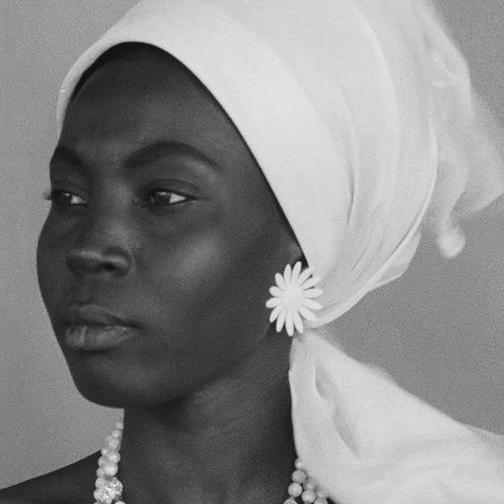
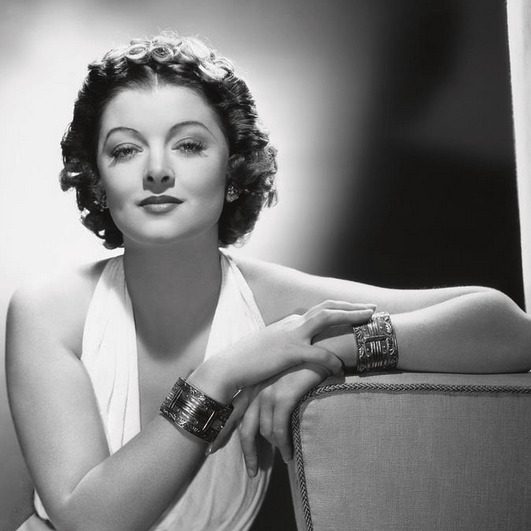
Propaganda
Mbissine Thérèse Diop (Black Girl)—She’s a Senegalese actress known for starring in Black Girl, one of the first African films to receive international attention/acclaim. So much of the movie relies on her ability to convey her character’s sense of isolation/loneliness, she’s so amazing, I really wish she had acted more. However, she just recently appeared in the film Cuties!
Myrna Loy (The Thin Man, Manhattan Melodrama, Mr Blandings Builds his Dream House)—Started out a slinky silent screen vamp. Became a screwball lead who had a blast drinking, being married to William Powell, solving mysteries, and taking her dog everywhere in the Thin Man Movies. Broke our hearts in The Best Years of Our Lives and played a string of dream wives. Remained hot the entire time. Decades of hotness.
This is round 3 of the tournament. All other polls in this bracket can be found here. Please reblog with further support of your beloved hot sexy vintage woman.
[additional propaganda submitted under the cut.]
Mbissine Thérèse Diop:
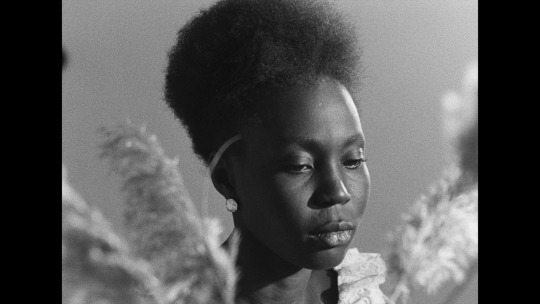

Myrna Loy:

Myrna Loy excelled at playing coy women, so common in screwball comedies in the 40s. She batted her lashes, and shrugged with grace, and made her costars look like foolish heels next to her. She charmed with sneaky elegance, well-placed pouting, and repartee. Besides, she was sultry AF.
While Myrna certainly looked hot in some her earlier vampy exotic bad girl roles, I think shes hottest when her comedic chops got to be displayed. Her dry wit, comedic timing, and subtle facial expressions make her the queen of deadpan snark.
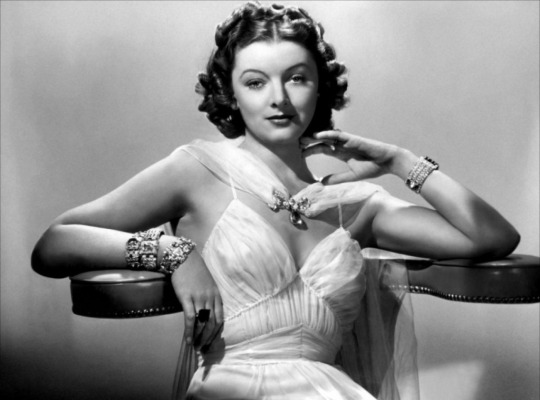
She's just very Mother
So beautiful and popular she was crowned Queen of the Movies in 1936, Myrna Loy was also an amazing actress. She's best remembered for The Thin Man and sequels, where she gets to show off her comedy skills, adding irresistible impish charm to her classic beauty and dancer's figure.
THE SASS
One of the few actresses who managed to successfully transition from silent to talkies, never won an Oscar but was at one time the highest paid woman in Hollywood. Advocated for better roles and pay for Black actors in the 1930s, so passionately anti-Nazi in the 40s she made Hitler's blacklist, spoke out against Joseph McCarthy during the Red Scare, and advocated for fair housing in the 1950s and 1960s, all while being hot as fuck opposite William Powell, Clark Gable, Cary Grant, Spencer Tracy and a whole galaxy of the Hot Vintage Men Poll all-stars.

Cute as a button with so much RIZZ! She and whatsisname in The Thin Man are relationship goals.
She was literally called the Queen of Hollywood! She is so sassy and funny in the whole Thin Man series. Absolutely hot in those, and who doesn’t love a woman who can laugh? She had the sultriest gaze and that style! Also before she was a star she sat as the model for an iconic statue for a school (representing “Fountain of Education”).
the glamour!! the banter!! the comedy!!

She's got this cute kinda scrunched up face AND shes funny AND shes got a bangin body.

273 notes
·
View notes
Text
2024 Old Hollywood Movies Project
After taking everyone's Old Hollywood movies recommendations into consideration, I've come up with a list of fity or so films to watch this year. I haven't yet decided whether or not I'm going to schedule specific films to specific months (though I will watch the Christmas movies at Christmas) or if I'm going to go by decade or just by list order. We'll see!
I also want to put in a couple of Anna Mae Wong's and Buster Keaton's films, but here is the list as it stands today, January 11th, 2024:
Design for Living, 1933
Morocco, 1930
The Prisoner of Zenda, 1939
My Man Godfrey, 1936
Bringing Up Baby, 1938
Stand-in, 1937
The Thin Man, 1934
The Big Sleep, 1946
The Maltese Falcon, 1941
It Happened One Night, 1934
Ball of Fire, 1941
The Gay Divorcee, 1934
Random Harvest, 1942
Now, Voyager, 1942
Brief Encounter, 1945
Meet John Doe, 1941
The Lady Eve, 1941
The Scarlet Pimpernel, 1934
Berkeley Square, 1933
I’ll Never Forget You, 1951
The Adventures of Robin Hood, 1938
The Mark of Zorro, 1940
The Sea Hawk, 1941
Rebecca, 1940
The Bishop’s Wife, 1947
The Shop Around the Corner, 1940
Scrooge, 1951
The Philadelphia Story, 1940
Holiday, 1938
Without Love, 1945
I Know Where I’m Going, 1945
Dodsworth, 1936
The Furies, 1950
Ninotchka, 1939
Christmas in Connecticut, 1945
Gaslight, 1944
The Crimson Kimono, 1955
Sweet Smell of Success, 1957
The Little Minister, 1943
The Uninvited, 1944
His Gal Friday, 1940
Trouble in Paradise, 1932
The Scarlet Empress, 1934
The Old Dark House, 1932
The Ghost and Mrs. Muir, 1947
The Night of the Hunter, 1955
Queen Christina, 1933
Mr. Blandings Builds His Dream House, 1946
Shanghai Express, 1932
22 notes
·
View notes
Note
hi! i'm so sorry to bother you, but can i ask you recommendations for old hollywood comedy movies? thanks in advance!
hi friend!! it's no bother at all! here's some old hollywood comedy recs for you under the cut 💗
Bringing Up Baby (1938)
The Thin Man (1934)
After the Thin Man (1936)
My Man Godfrey (1936)
The Awful Truth (1937)
The Palm Beach Story (1942)
I Married a Witch (1942)
The More the Merrier (1943)
Arsenic and Old Lace (1944)
The Mating of Millie (1948)
Mr. Blandings Builds His Dream House (1948)
Born Yesterday (1950)
Gentlemen Prefer Blondes (1953)
Indiscreet (1958)
Some Like It Hot (1959)
Charade (1963)
Pillow Talk (1959)
Man's Favorite Sport? (1964) — warning: includes a recurring character who's in redface.
Send Me No Flowers (1964)
note: almost* all of these are technically romantic comedies *except for The Thin Man films, Arsenic and Old Lace, and Mr. Blandings.
i hope this helps!! 💞
17 notes
·
View notes
Photo

Colorful 55″x 78″Italian poster for Mr. Blandings Builds His Dream House (RKO, 1948). Art by Averardo Ciriello.
Currently up for auction at Heritage Auctions!
#Myrna Loy#cary grant#mr blandings builds his dream house#old hollywood#foreign posters#The Myrna Loy Blog
12 notes
·
View notes
Note
1945-1950 💗
1945 Christmas in Connecticut A Tree Grows in Brooklyn Without Love Spellbound State Fair
1946 The Best Years of Our Lives Gilda A Stolen Life The Dark Mirror Notorious
1947 The Egg and I The Ghost and Mrs. Muir Secret Beyond the Door… Down to Earth The Unsuspected
1948 The Woman in White Mr. Blandings Builds His Dream House The Mating of Millie Julia Misbehaves Sorry, Wrong Number
1949 The Heiress The Forbidden Street It’s a Great Feeling The Lady Takes a Sailor The Inspector General
1950 A Woman of Distinction All About Eve Cheaper by the Dozen No Man of Her Own So Long at the Fair
#ask game#thanks so much caitlin!#some years are so hard to decide but it's such a fun distraction!#i dunno how inspector general ended up on here in 2 year categories#thanks to the person who pointed it out#i must have copied and pasted twice without noticing#i was/am so tired#left out one of my all time favorite movies A Woman of Distinction but now it's fixed!#favorite movie a year asks
9 notes
·
View notes
Note
top five black and white movies !! 👀
I Love Being Asked About Movies And Yet I Suffer Because I Must Pick So Few. alas.......
black and white specifically........hmmmm.......................okay so once again this is perhaps not The top 5 but certainly A top 5 re: movies, a top 5 i have scraped around in my brain for to shake up my default picks
-the night of the hunter has some extreme light and shadow, especially shadow, and i don't think it would have worked, i don't think it would be the same movie, without those extremes.
-les yeux sans visage has some really striking and haunting shots, and a bit of blood that i think would have read as weird in color, but is perfectly acceptable in black and white. and the face mask, too!! i don't think it would have been the same if it wasn't so, fuzzy and muted and gray. almost blending into her face until the light hits it right and you really feel the sadness and horror of it.
-inherit the wind. i never want to say a lot about inherit the wind bc i feel it speaks for itself but i think it's a gorgeous movie, AND it has gene kelly in a non-dancing and non-singing role, which i love.
-GOD I SHOULD REALLY PICK A COMEDY OR SOMETHING. one of the things i find fascinating about black and white is that, well clearly it was filmed in color (never forget the story of carl reiner being asked 'so how do you feel about the dick van dyke show being colorized? won't it be strange to see it like that?' and he said 'well, we filmed it in color. i saw it in color. while we were shooting.'), but i just cannot imagine it in color (like, myrna loy's christmas party dress in the thin man. it's probably like, red and white, like a candy cane, bc it was christmas. but to me it is gray and white, bc that's how it shows up on the screen, and i love it like that.), and i think that becomes really funny and charming in a movie like, mr. blandings builds his dream house. it's a light and fun little time with cary grant and myrna loy, uh, building their dream house, and there's a moment where myrna loy is describing the super particular paint shades she wants. and it's in black and white. does she ever get her robin's egg blue?????? but it also still doesn't matter that it's in black and white!! you still haven't lost anything!!!
-the gazebo. for some reason it took quite a few watches for this movie to grow on me, like when i first watched it i didn't think it executed everything right but i loved the idea of it so much i still just kept watching it, until it became a movie i go back to with relative frequency. it's just such a fun little black comedy with like, all the pieces of a noir, you could say, murder and blackmail and a man turned to the darkest act by circumstances, at times shadowy and dark, just played entirely as a comedy, bc it's also so fucking absurd. there's a pigeon!!!! there's a phone call with alfred hitchcock!!!!! the murder victim is wrapped in shower curtains!!! lo and behold, carl reiner is here!!!!!! my all time favorite character actor, john mcgiver, is here, pronouncing gazebo as gaze-bo!!!! debbie reynolds gets some of the best dialogue in the whole movie!!!!!!!
3 notes
·
View notes
Text
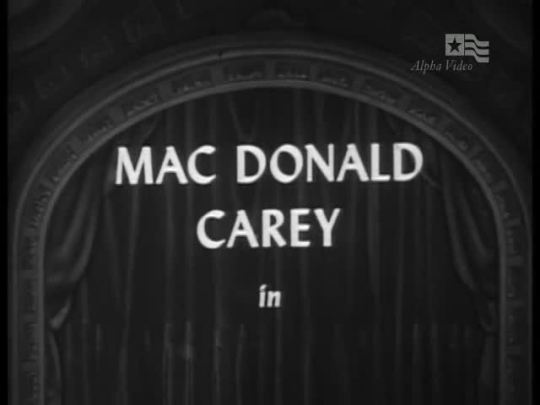
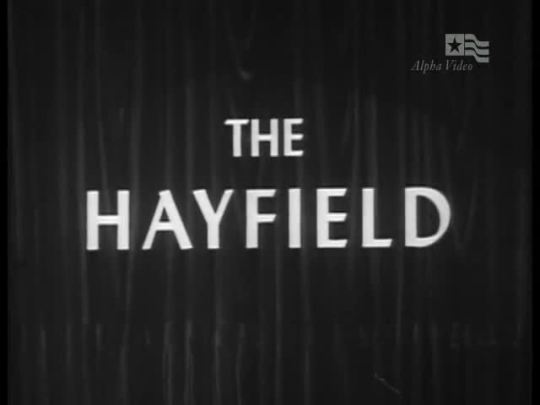
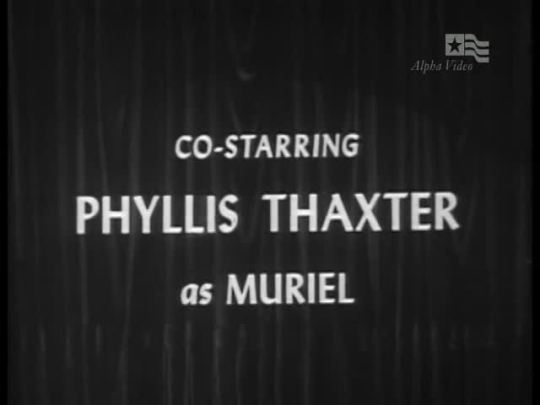
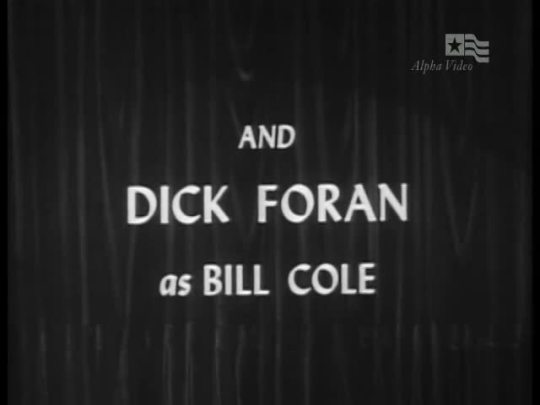
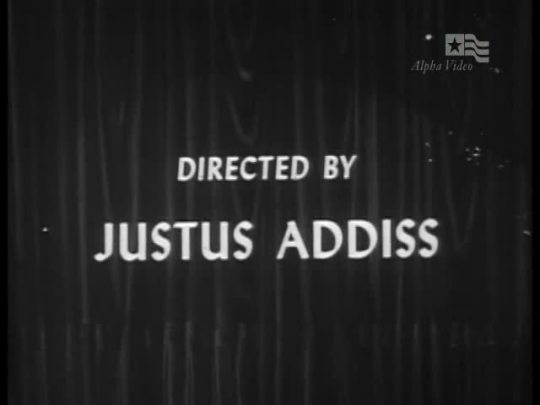
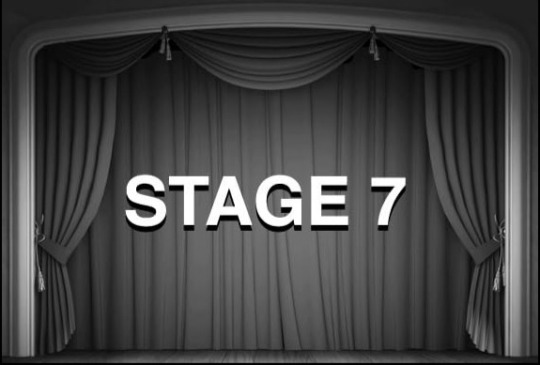
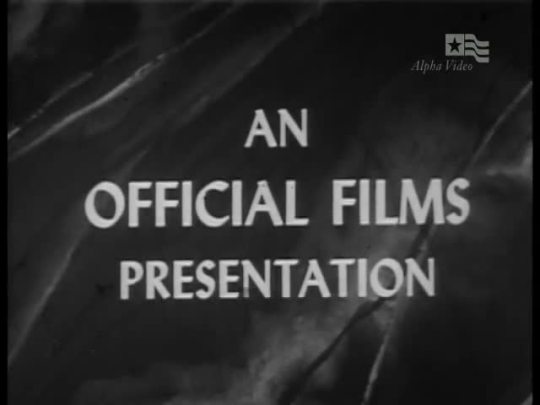
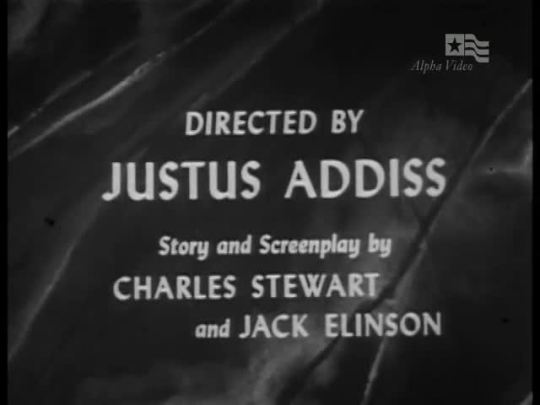
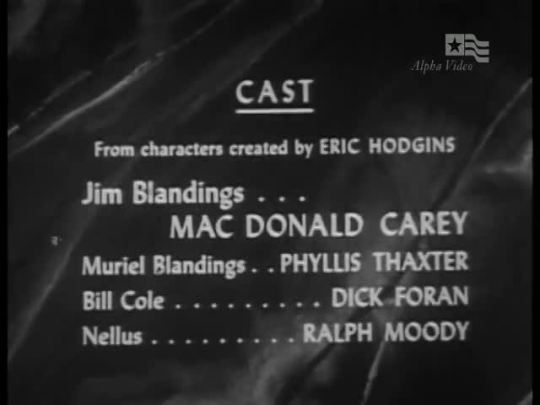
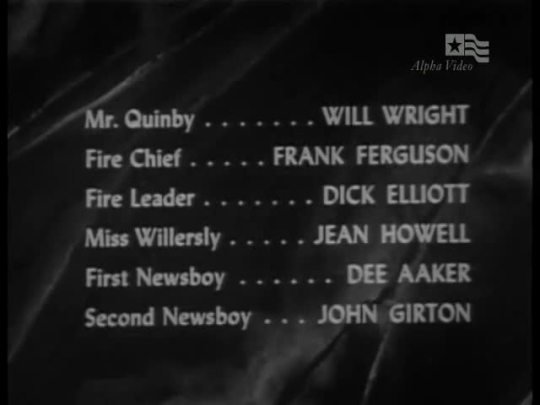
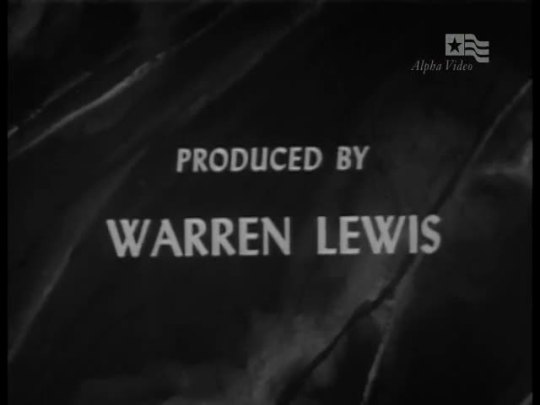
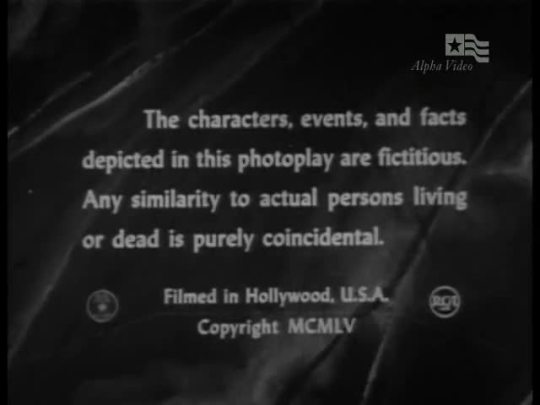
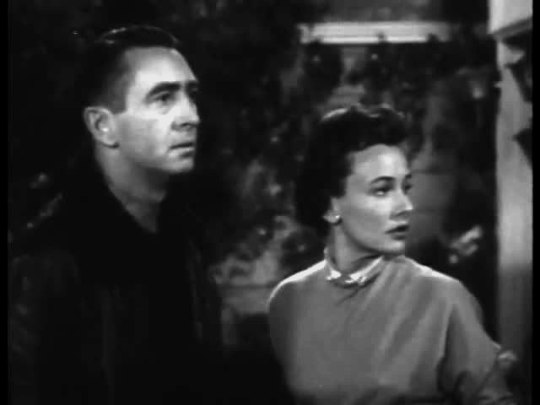
From the Golden Age of Television
The Hayfield - CBS - September 18, 1955
A presentation of "Stage 7" Season 1 Episode 24
Comedy
Running Time: 30 minutes
Stars:
Macdonald Carey as Jim Blandings
Phyllis Thaxter as Muriel Blandings
Dick Foran as Bill Cole
Ralph Moody as Nellus
Will Wright as Mr. Quinby
Frank Ferguson as Fire Chief
Dick Elliott as Fire Leader
Jean Howell as Miss Willersly
Dee Aaker as First Newsboy
John Girton as Second Newsboy
This was a sequel to the film, "Mr. Blandings Builds His Dream House" starring Cary Grant, Myrna Loy and Melvyn Douglas.
2 notes
·
View notes
Text
The Best of Cary Grant

The 20 greatest films of the greatest of film stars, ranked and rated high-to-low:
His Girl Friday (1940) ★★★★★★★★★★
North by Northwest (1959) ★★★★★★★★★★
Arsenic and Old Lace (1944) ★★★★★★★★★☆
To Catch a Thief (1955) ★★★★★★★★★☆
Bringing Up Baby (1938) ★★★★★★★★★☆
The Philadelphia Story (1940) ★★★★★★★★½☆
My Favorite Wife (1940) ★★★★★★★★☆☆
Topper (1937) ★★★★★★★★☆☆
Father Goose (1964) ★★★★★★★☆☆☆
Notorious (1946) ★★★★★★★☆☆☆
The Awful Truth (1937) ★★★★★★★☆☆☆
Holiday (1938) ★★★★★★★☆☆☆
I'm No Angel (1933) ★★★★★★★☆☆☆
She Done Him Wrong (1933) ★★★★★★★☆☆☆
An Affair to Remember (1957) ★★★★★★½☆☆☆
I Was a Male War Bride (1949) ★★★★★★☆☆☆☆
Thirty Day Princess (1934) ★★★★★★☆☆☆☆
Ladies Should Listen (1934) ★★★★★★☆☆☆☆
The Talk of the Town (1942) ★★★★★★☆☆☆☆
Mr. Blandings Builds His Dream House (1948) ★★★★★★☆☆☆☆

2 notes
·
View notes